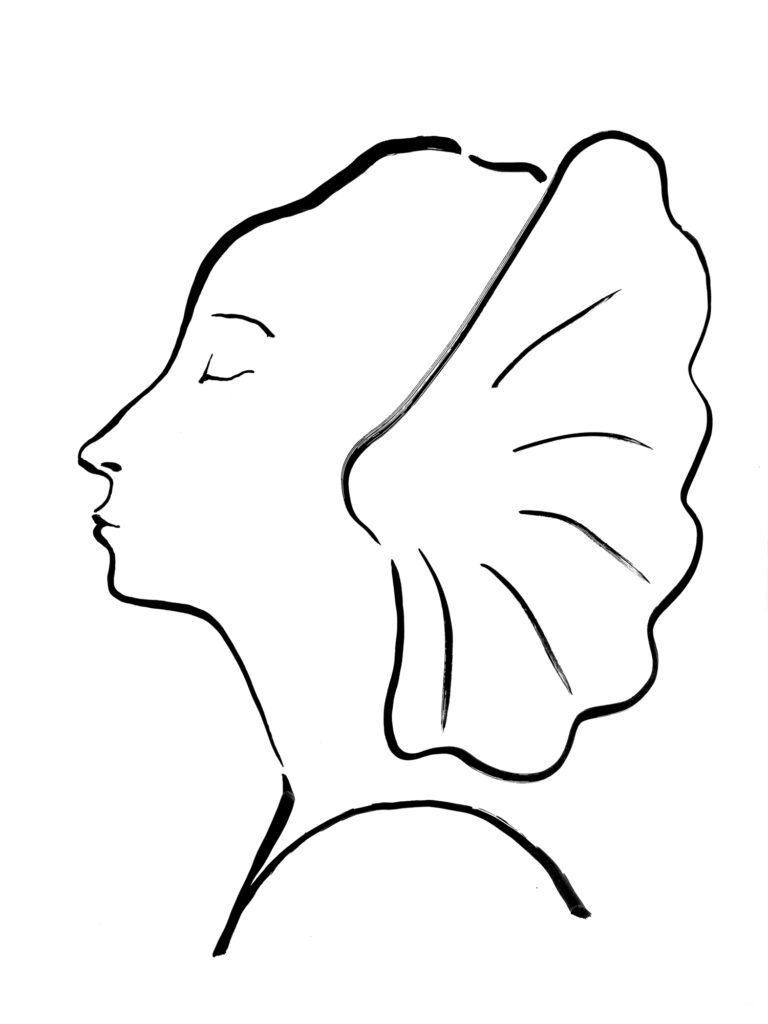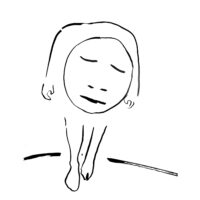If you are able to laugh despite the difficulties of life, it provides you with the distance you need to reconnect. Laughter raises above everyday worries without ridiculing them.
Every human being has experienced humor. What is humor though, actually? Let us begin, as befits a serious treatise, with a definition of the subject. According to the Duden dictionary, humor is «a human being’s gift to be able to face the inadequacy of the world and of human beings, the difficulties and misfortunes of everyday life, with cheerful composure.» This already clearly points out why every teacher and students are, so to speak, existentially dependent on humor! The word ‹humores› (fluids) originates from the medieval fluids and temperaments theory. Umor (lat.); umere: ‹to be moist›. In German, the closest word for ‹moist› is ‹feucht›, which stems from an Indo-Germanic root, and is connected to ‹Ochse› (moisturizer, inseminator), which means ox and thereby also solves the riddle of typical German humor! Indeed – for example in a school class or conference – practiced genuine humor has a vitalizing, stimulating and often liberating effect.
Tragi-Comic
Something comical is basically understood similarly to something tragic: as the perception of a conflict of contradictory principles; in regard to comedy, however, exaggerated contrasting evokes laughter. Let’s take one of my favorite Woody Allen jokes as an example: «Of course the afterlife exists. The only question is, how far is it from the city and can you take a shower there?» Here, two contradictory principles are juxtaposed in masterful brevity. Analysis shows beyond a doubt that neither the first nor the second part of the statement is funny on its own, only the combination is. Similar to Morgenstern’s famous Picket Fence, with space in between, to look through, humor does not really exist, is not tangible, but lies in the relationship, that is, in-between. Humor is and creates pure relationship!

This even applies to irony, which is much criticized today. Sure, people who constantly ironize everything are poison for education, especially for that of young children. If the other person cannot understand irony, it is manipulation and mockery at their expense. Constructive irony also exists, though – Robert Musil speaks about it in the fragmentary appendix of his novel ‹The Man Without Qualities›: «Irony is: to portray a cleric in such a way that they also resemble a Bolshevik. To portray a fool in a way that the author suddenly partly recognizes himself. This kind of irony – constructive irony – is quite unknown in Germany nowadays. It is the context of things from which it emerges unveiled.» Thus, in middle and especially high school, so-called Socratic irony can be a vehicle of didactic communication: «Here, deliberately false or questionable values, logical fallacies, or questioning ignorance are intended to provoke positive efforts to gain knowledge, involving educators’ self-irony.» (Brockhaus) Finally, romantic irony denotes «the feeling of an indissoluble conflict between something unconditional and something conditional, of the impossibility and necessity of full communication.» (F. Schlegel)
Humor is Healthy
In connection with his patients’ psychological suffering, Victor Frankl, the famous psychiatrist and founder of logotherapy, attributes outstanding importance to humor: «Nothing makes patients distance themselves as much as humor. Humor would deserve to be recognized as something existential, not at all unlike concern and love.» Kierkegaard’s euphemism of humor clearly aims in a logotherapeutic direction. If we follow, we can understand humor as «recognition of authenticity, an ideal, human-ethical, meaning full of values in an inauthentic form of appearance. From this a humorous attitude towards the world, a smile, cheerfulness, conciliation, serene contemplation of human weaknesses and earthly shortcomings, strength to endure suffering and even horror arises.»

The quotations used in this section are all taken from the very readable essay by Andreas Dickhäuser ‹Humor in Teaching› (from Existence and Logos, issue 1/2002). Dickhäuser continues:
«This is where I see a connecting factor for the use of humor in teaching. […] If self-distancing is set in motion with the help of humor, a significantly improved learning and working atmosphere can be established. This type of atmosphere awakens, promotes and maintains […] students’ willingness to learn and make an effort and is helpful in implementing required learning goals. In addition, since ‹genuine humor› has a highly socially bonding effect, a relationship of trust can develop between teacher and student in the long term, which may also have positive effects on students’ relationships amongst each another.»
Humor as a Curative Virtue
Humor cannot only be used in a methodical-didactic way but is in fact an attitude toward life, which Rudolf Steiner recommends curative educators embrace: «In spite of all possible clever tricks, one will not be able to educate these children if one does not have the necessary sense of humor. So the capability of being flexible will have to be implemented in the Anthroposophical movement.» Not only does humor help curative educators and social therapists to better cope with existential situations with which they are often confronted on a daily basis, but it is also an excellent means of communication for establishing contact with people who do not have sufficient linguistic abilities, or do not have linguistic abilities at all. Precisely these people often display high intelligence, which cannot be expressed otherwise, in regard to understanding humor.
Anthroposophical Gatherings and ‹Long Faces›
The profession of teaching and the initial situation of teaching have inherent humor, especially when one thinks of themself as a role model. This basic humor is reinforced by the efforts of Anthroposophical pedagogy. «Recognition of authenticity […] in an inauthentic form of appearance», as Kierkegaard described humor above, is the basic theme of all previous forms of Anthroposophical ambition! «It is sometimes painful when one attends Anthroposophical gatherings», Rudolf Steiner complained as early as 1924 in Curative Education, «seeing people’s ‹long faces›. They are hardly inclined to cheer up, to laugh!» This is certainly one of the main reasons why some people who are very invested in Anthroposophy do not want to become members of the Anthroposophical Society. In accordance with Groucho Marx’s unsurpassed justification, of course: «I would never become a member of a club that accepts people like me!»
Gelotology
Delicious punchlines also arise when humor is approached with the tools of gelotology, the science of laughter. A particular difficulty in ethnological research is that the laughter of other cultural groups could often only be observed in the contact situation with ethnologists: other ethnic groups laughed at the behaviors of ethnologists that were astonishing to them. Thus, the researcher’s background and behavior during their observations occasionally influenced the actions and reactions of the individuals they observed. Science is a serious business!
From all points of view only touched upon here, it becomes clear why humor is indispensable for educators, teachers, and, of course, students in the everyday life of education for freedom: humor is a great relationship builder! It allows connections to be made, it creates a warm, understanding, and forgiving social climate. Or in Christian Morgenstern’s words, «Humor is the utmost freedom of the spirit!» Translation: Simone Stadlbacher
Drawings by Estella Mare














Thanks for thought filling articles.
I am glad to know that humor exists within the anthroposophical society and that it is taken seriously.
I don’t think I take you seriously, seriously you take me seriously if you think I am serious, seriously I am, aren’t you? Seriously?
You must be kiddin’ me Nick!
On long faces, Steiner mentioned several times that they were the ones actually making fun of Anthroposophy while those that could laugh at it were really carrying it. That’s why people admitted to heaven are politely told, ‘Please be quiet when you go past the Anthroposophists. They think they’re the only ones here.’ Some of them- others got stuck in an eternal lecture about heaven. But seriously- humour can often dispel an awkward situation, resolve potential discipline issues in the classroom, or as the author says, build bridges to children in a curative situation.
What a joke, an article of 3 1/2 lines!!!
What a con!!!!